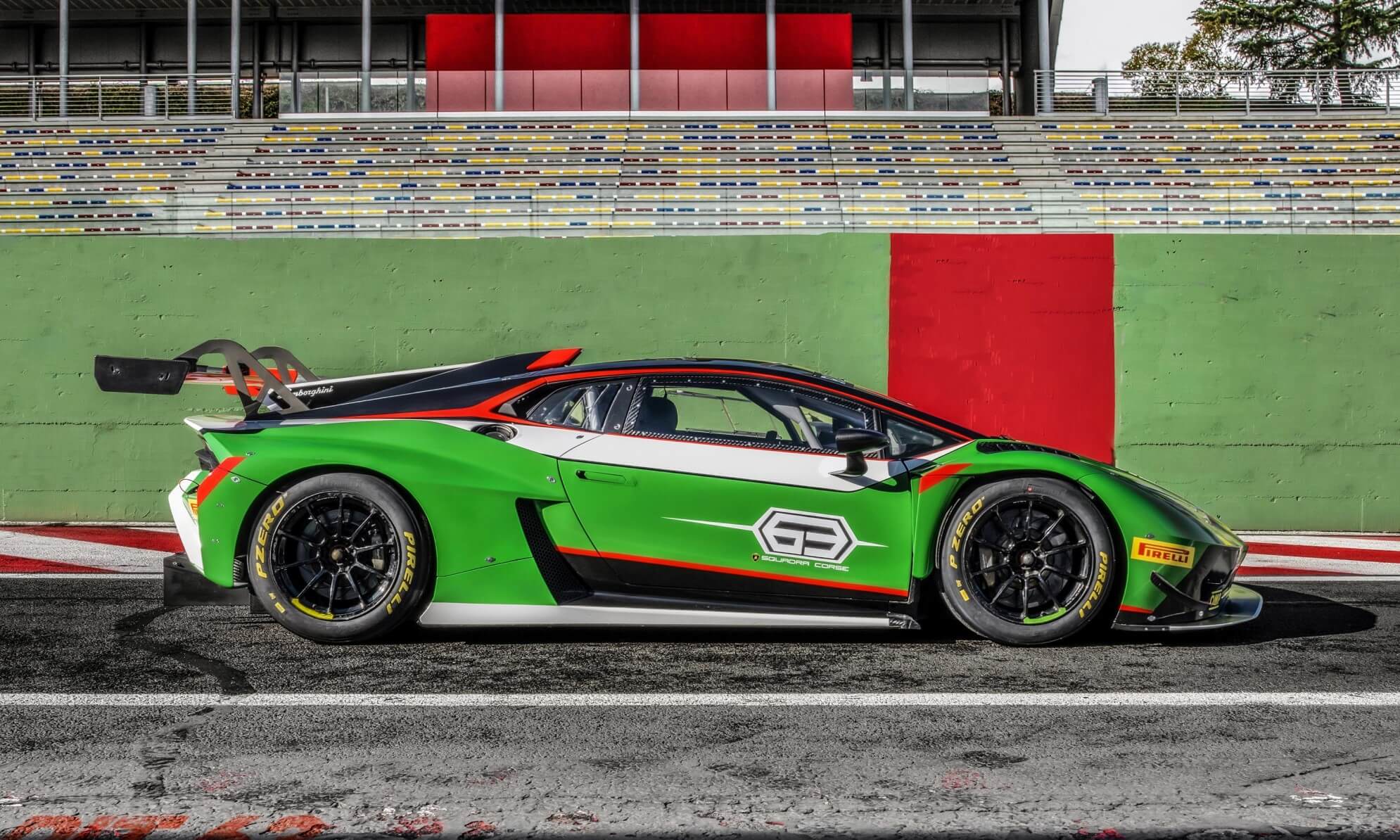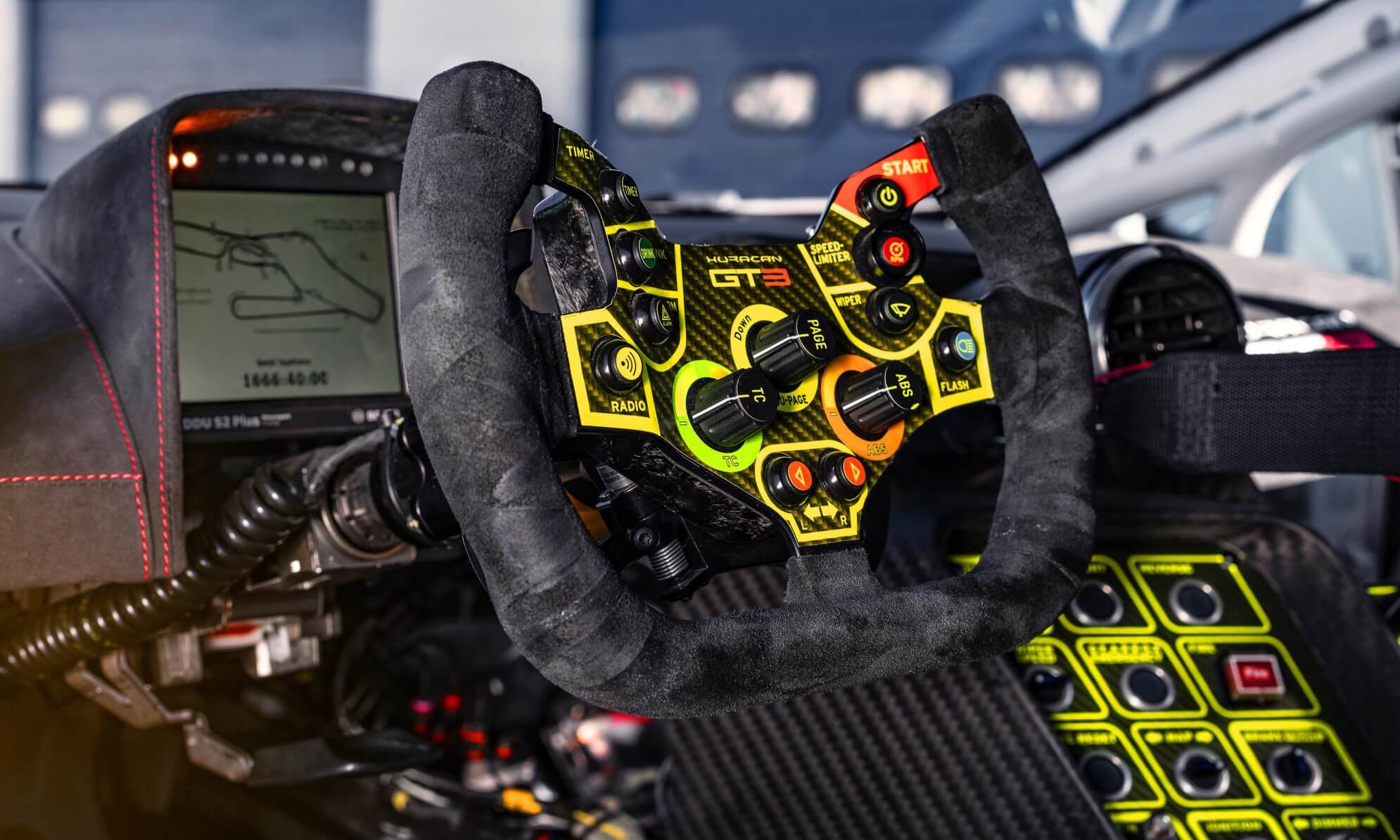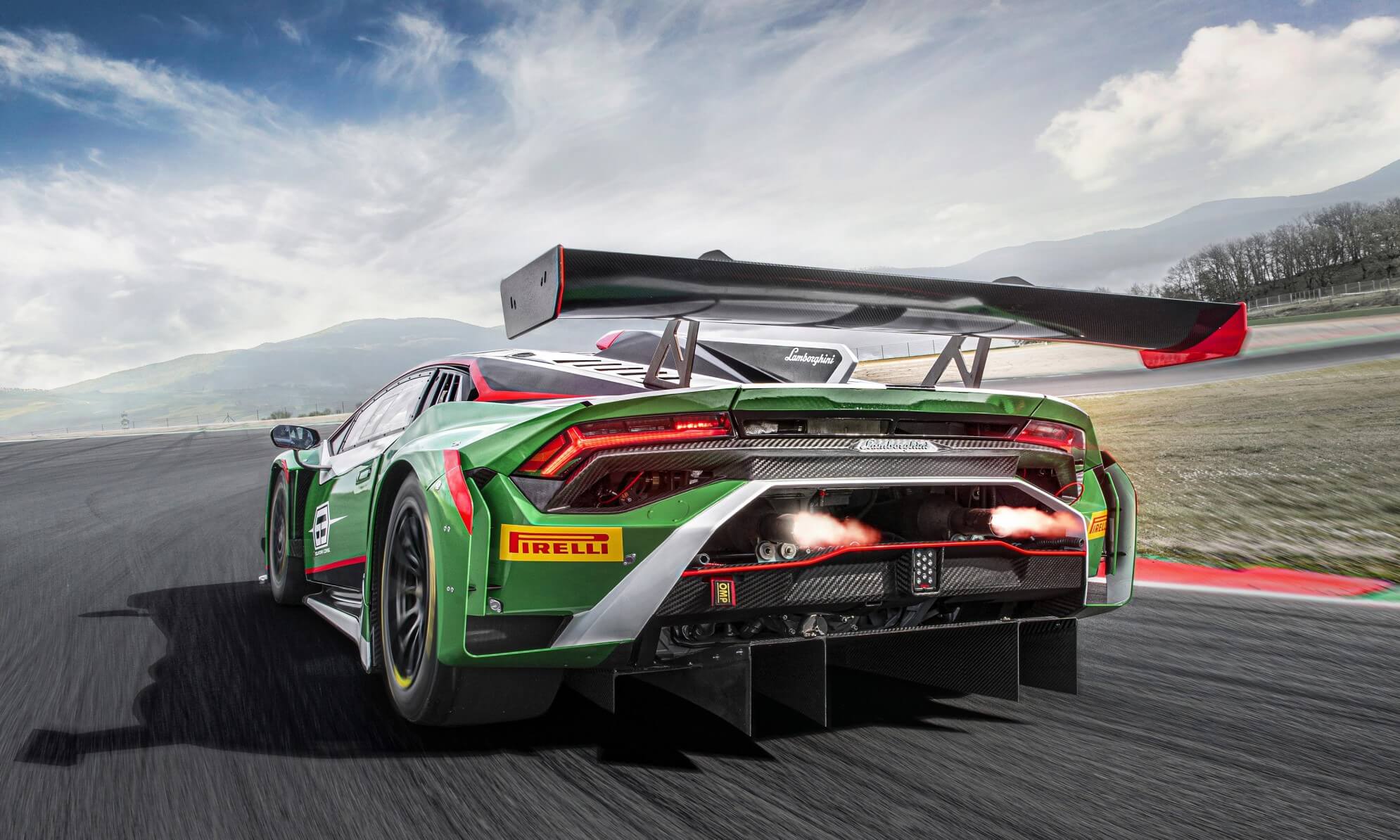GT3 racing is enjoying massive popularity at the moment. All the major automakers compete in this production-based category. Today, Lamborghini pulled the wraps off the second generation of its most recent race-ready machine. Say hello to the Lamborghini Huracan GT3 Evo2.
Follow Double Apex on Facebook and Instagram, where we share more car content.
Buy now and take advantage of free delivery in South Africa on orders over R349.
Updated
The Huracan GT3 EVO2 was designed and developed by Squadra Corse. This is Lamborghini’s in-house special vehicles operations arm. The company’s press material states that the Evo2 is based on the track-focussed Huracan STO.
Read more about Huracan STO by clicking here.
The Lamborghini Huracan GT3 Evo2 has the same naturally aspirated V10 as its road-going sibling. Feeding the engine is the same hexagonal airscoop design and rear fin as seen on the STO. Changes to the motor include the adoption of 10 throttle bodies that pass fresh air over titanium valves.
Check out the bonkers, track-only Hyper X1 Racer at this link.
New appearance
The carbon fibre body features a few changes. These include new splitters, diffuser and underbody, which all enhance aerodynamic efficiency. The STO inspired rear wing has new mounts that make it easier to adjust.
Read our driving review of the Huracan Evo by clicking here.
New safety measures include a redesigned roll cage and new carbon-Kevlar honeycomb side panels. The new side panels provide added occupant safety in the event of a side impact. New brake calipers and pads have been designed to optimise performance in endurance and sprint races.
Giorgio Sanna, Lamborghini head of motorsport, commented: “The new Huracán GT3 Evo2 is not simply an evolution of the current car. It’s a new project that reinforces the technological transfer between Lamborghini’s motorsport division and the company and inherits two difficult tasks: to prove as successful as the previous generations of Huracán GT3, which have won more than 40 international titles in six seasons, and to match its commercial success by helping to reach the target of 500 Huracán racing cars since 2015.”






![[UPDATED] Mazzei Formula Five Is One Man’s Obsession](https://doubleapex.co.za/wp-content/uploads/2024/08/Mazzei-Formula-Five-500x383.jpg)
![Ferrari Amalfi Introduced as Roma’s Replacement [w/video]](https://doubleapex.co.za/wp-content/uploads/2025/07/Ferrari-Amalfi-500x383.webp)
![Koenigsegg Sadair’s Spear is a Limited-Edition Track Weapon [w/video]](https://doubleapex.co.za/wp-content/uploads/2025/07/Koenigsegg-Sadairs-Spear-rear-500x383.webp)
Leave A Comment